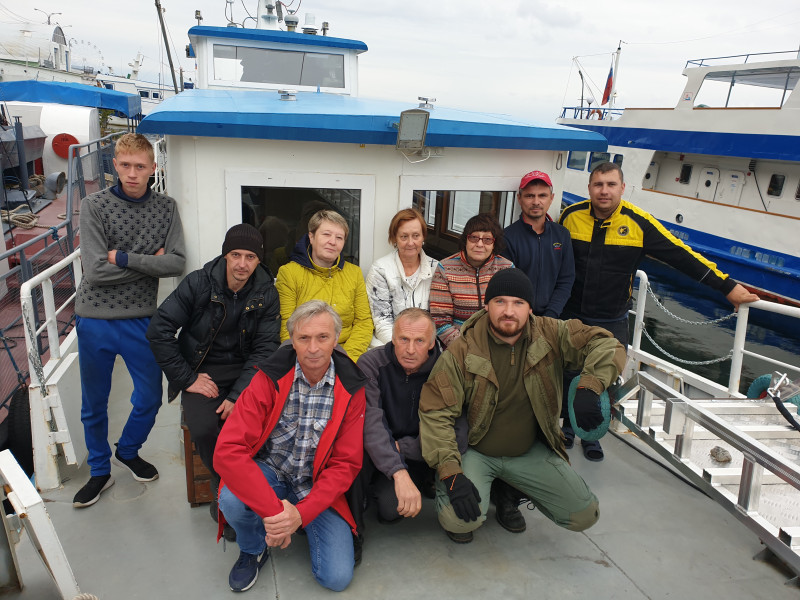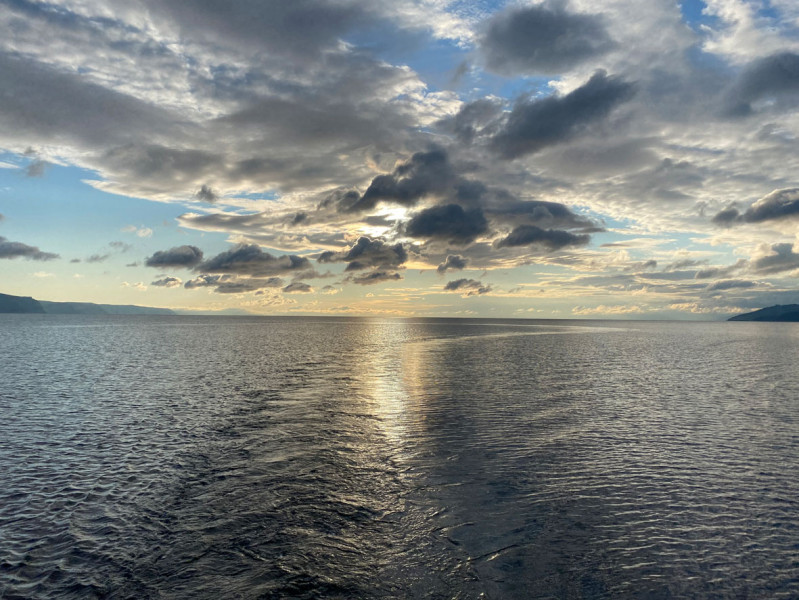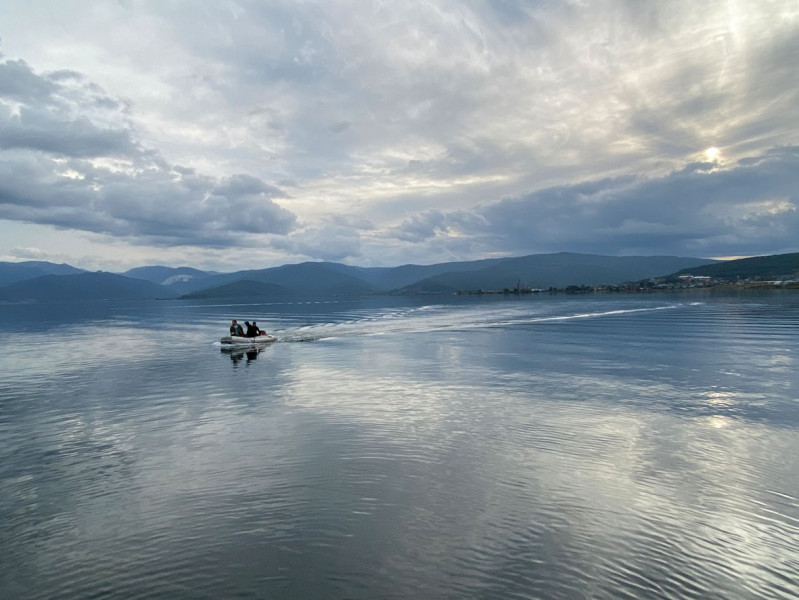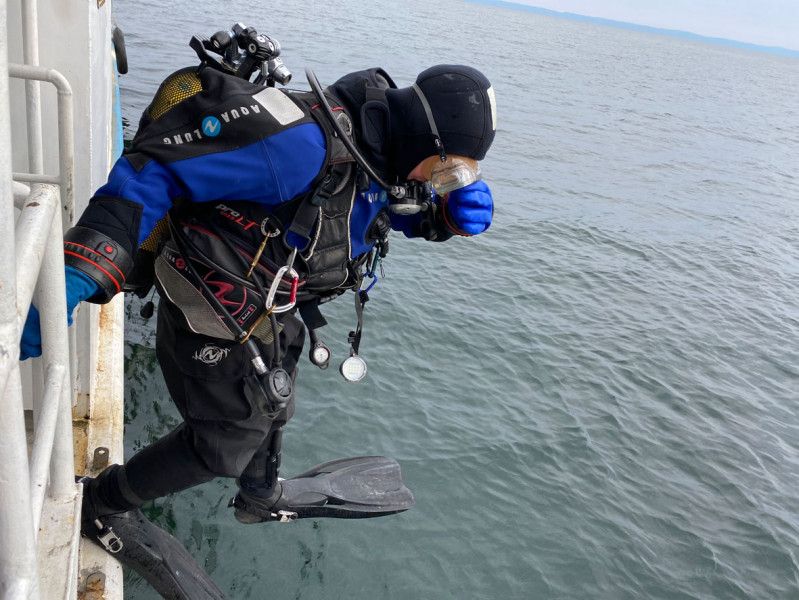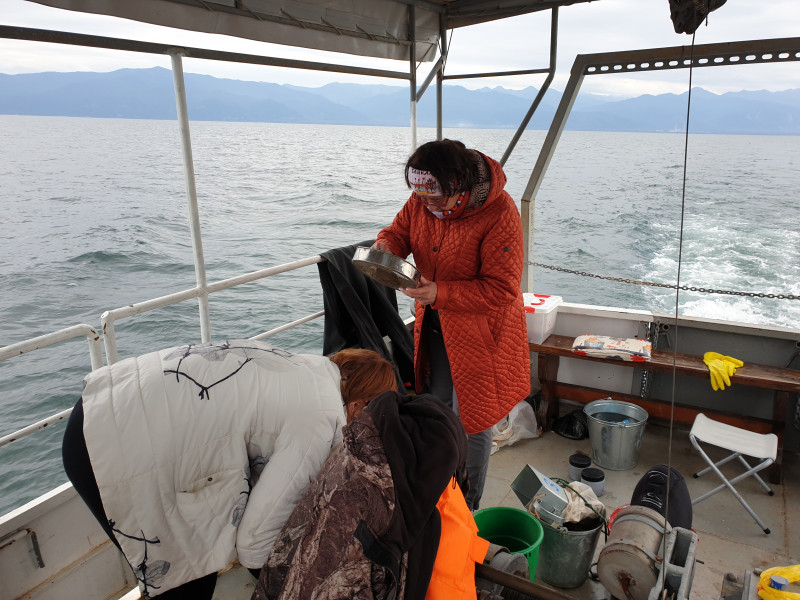Expedition on board the RV “Papanin” from 3 to 5 September 2021
The expedition was carried out within the framework of the programmes “Study of the transformations of the state of water bodies and watercourses in East Siberia in seasonal and long-term aspects in the context of climate change, geological environment and anthropogenic pressure”, “Comprehensive studies of the coastal zone of Lake Baikal: long-term dynamics of communities under the influence of various environmental factors and biodiversity; causes and consequences of negative environmental processes” and “From the cell to the ecosystem: Investigation of the ultrastructure of aquatic organisms and their communities in the evolutionary and ecological aspects by methods of cell biology and genomics”.
The aim of the expedition was to study reproductive characteristics of the Cottocomephorus grewingkii (Cottocomephorinae) spawning stock in August at sites with different anthropogenic pressure in the southern basin of Lake Baikal, to collect material of Baikal species of molluscs and to take samples of diatoms
Tasks of the expedition:
- To obtain data on the abundance and distribution density of the Cottocomephorus grewingkii clutches at the shallow-water sites with high anthropogenic pressure (the Kultuk settlement and the towns of Slyudynka and Baikalsk) and to conduct the subsequent comparative assessment with the data from previous years.
- To collect biological specimens of gastropods and diatoms from different soils by depths at sites of the southern basin of Lake Baikal.
Fieldwork fulfilled:
To assess the Cottocomephorus grewingkii (Cottocomephorinae) spawning stock in August, underwater research was carried out to count nest sites and egg clutches in the rocky littoral zone of the southern basin of Lake Baikal. Fieldworks were conducted along 14 transects in areas with high anthropogenic pressure (the northern end of the west coast of Kultuk Bay, opposite the Slyudyanka town, the Sukhoy Ruchey settlement, and the Baikalsk town). There was an extremely low density of nest sites and a small number of egg clutches of Baikal sculpins at all study sites as well as the rapid development of filamentous algae of the genera Spirogyra and Didymosphenia.
Thirteen samples of gastropods and bivalve molluscs were collected from rocky and soft soils at four sites of the southern basin: Kultuk Bay (the northern end near the west coast), near the Slyudyanka town (the middle part of the bay) and the Sukhoy Ruchey settlement (the northern end of the east coast) as well as near the Baikalsk town. Scuba divers took the samples with nets from depths of 2 to 4 m, 4 to 6 m, 8 to 12 m, and 20 to 30 m. Sixteen species of gastropods (the families Valvatidae, Benedictiidae, Baicaliidae, and Planorbidae) and about six species of bivalves (the genera Sphaerium and Pisisdium) were identified. Molluscs were prepared for morpho-anatomical studies (eight species of the family Baicaliidae and four species of the genus Baicaliidae within the family Planorbidae), the study of the ultrastructure of spermatozoa (two species of the genus Choanomphalus) and molecular genetic studies (the representatives of Bivalvia, six species of the family Baicaliidae and one species of the family Benedictiidae) as well as for the study of the structure of the shell (one species of the family Valvatidae and one species of the family Baicaliidae). For the first time, metacercariae and cercariae of trematodes were detected in Baikal endemic gastropods, Choanomphalus anomphalus, collected near the Baikalsk town. It was found that in the littoral zone of the northern end of Kultuk Bay where the bottom is covered with the remains of bark from trees, the fauna of molluscs is poor: only four gastropod species were identified in single quantities. The soft soils in the littoral zone near the Slyudyanka town were also poor. Here, only five gastropod species were identified in single quantities. The greatest number of species of gastropods (15) was identified in the zone of depths from 8 to 12 m on clean sand to the south of the former Baikalsk Pulp and Paper Mill.
To assess the diversity and species composition of the communities of the littoral diatoms, sampling was carried out in Kultuk Bay (three stations) and near the Baikalsk town (two stations near the former Baikalsk Pulp and Paper Mill). Samples were taken from rocky areas of the littoral zone and from 0 to 2 cm of the upper layer of soft soils (sand and silty sand) at depths of 2, 4, 6, 8, 12, and 20-30 m. Overall, 16 samples were taken. All obtained samples were processed to make preparations in the future for the examinations using light and electron microscopy. Aliquots were taken from six samples of microphytobenthos before their fixation, and the aliquots were placed in culture flasks with DM medium to obtain the primary total culture for the subsequent isolation of species-specific laboratory cultures of bottom Baikal diatoms.




